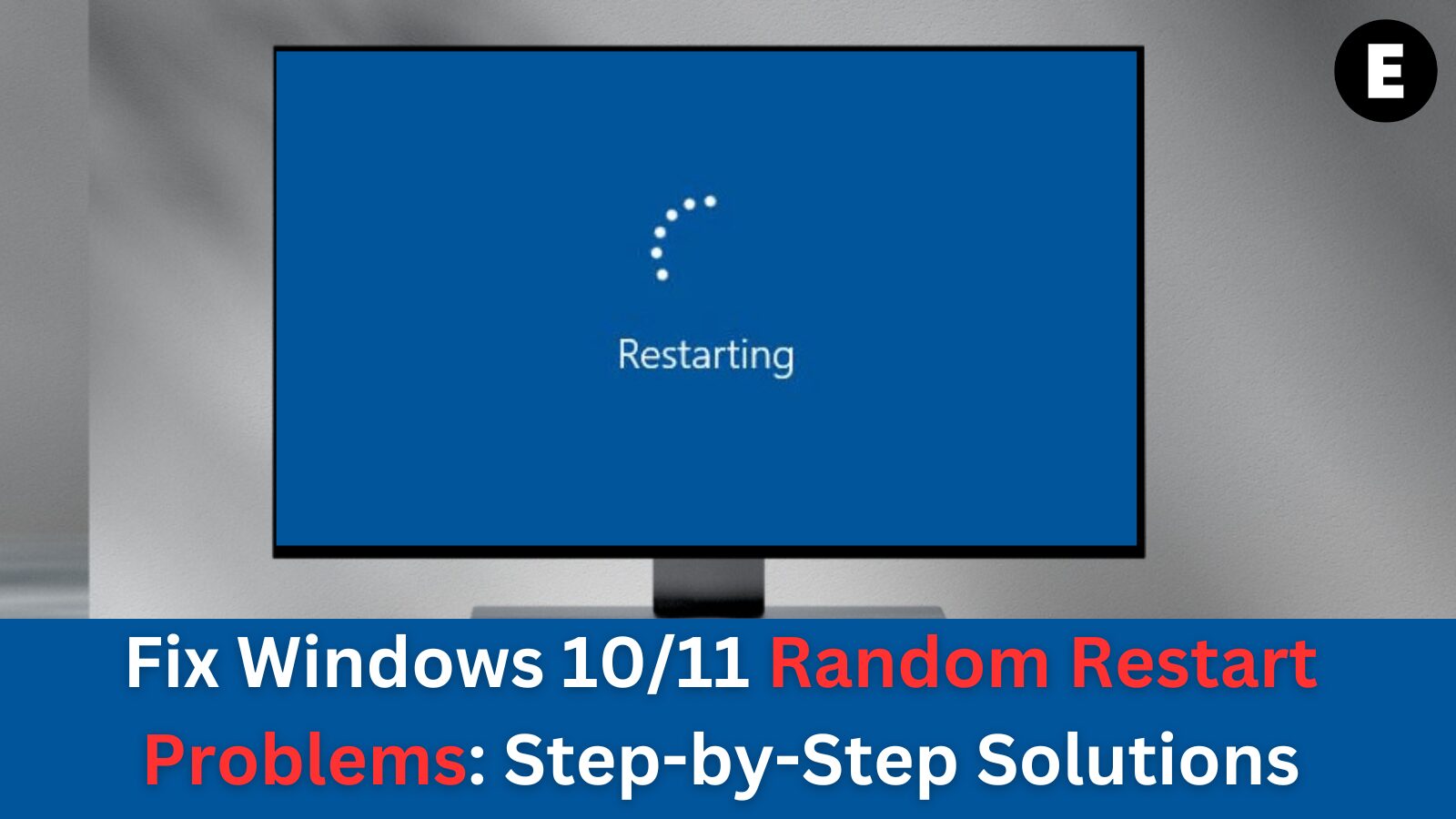Are you facing issues with your computer randomly restarting? You’re not alone. Many Windows 10 and Windows 11 users have been experiencing this frustrating problem for a while.
There are several reasons why your computer might be randomly restarting. It could be due to a faulty power supply, a damaged hardware component, or even a malware infection. Whatever the cause, it’s important to resolve the issue quickly to avoid further disruptions.
If you’re tired of your computer randomly restarting, don’t worry. Follow our step-by-step guide to troubleshoot and fix this issue with ease.
Windows 10 and Windows 11 Reboot Automatically – Random Restart Issue
Windows 11 boasts the highest-grade software architecture of all Microsoft Windows versions, but it’s not perfect. One common issue is when Windows 11 randomly restarts without any warning or a blue screen of death (BSOD) error. Although only a small percentage of Windows 11 users experience this, the problem is more common on computers with an older processor.
Fortunately, there are several ways to fix this issue. If you are dealing with random restarts on your Windows 10/11 PC, there are multiple solutions you can try to resolve the problem:
- Update your drivers
- Check for hardware issues
- Run a virus scan
- Perform a clean boot
- Reset your PC
- Check your power supply
- And more!
Continue reading to find detailed steps for fixing random restarts and restoring your Windows 10 or Windows 11 operating system to avoid unexpected reboots.
What Should I Do if My Windows 10/11 PC Randomly Restarts?
If your Windows 10 or Windows 11 PC is randomly restarting, there are several things you can try. The solutions vary depending on the underlying cause. Here are some general troubleshooting tips to fix random restart, automatic restart, and similar issues on Windows 10 and Windows 11:
- Check for driver updates. Outdated or incompatible drivers can trigger all sorts of issues, including random restarts.
- Check for hardware issues. This is particularly important if you’ve recently added new hardware or changed your computer’s components.
- Uninstall recently installed apps or undo recent deep system changes.
- Use the built-in troubleshooters and Windows Security to fix the error.
If you’re unsure how to complete these troubleshooting steps, continue reading for detailed instructions. Alternatively, you can reach out directly to our experts at EcomKeys for guidance on restoring your Windows 10 or Windows 11 PC and resolving the random restart issue.
What Causes Random Restarts on Windows 10 and Windows 11?
There are many reasons why your Windows 10 or Windows 11 computer might be experiencing random restarts. These range from simple issues like outdated drivers to more complex problems like hardware faults or viruses.
Some of the most common causes of random restarts include:
- Outdated drivers
- Faulty hardware
- Power supply problems
- Viruses or malware
- Third-party applications
- System file corruptions
- Bugs in Windows Updates
If you’re unsure about what’s causing your computer to randomly restart, we recommend trying a few different troubleshooting methods to help identify and resolve the issue.
How to Fix Windows 10 and Windows 11 Randomly Restarting
If you’re experiencing random restarts on your Windows 10 or Windows 11 computer, it’s likely due to issues with your power supply, drivers, or hardware. Here are some troubleshooting tips to help you fix the issue.
Method 1: Disable Automatic Restart
One of the first steps to take when your computer starts randomly restarting is to disable the automatic restart feature. Follow these steps to disable automatic restart in Windows 10 and Windows 11:
- Type Advanced settings into the Windows Search bar, then click on Advanced system settings from the list of results.
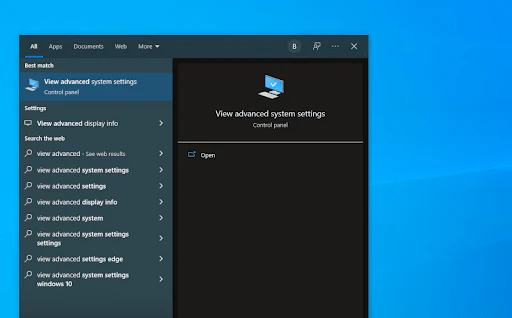
- Switch to the Advanced tab, and then click the Settings button inside the Startup and Recovery section.
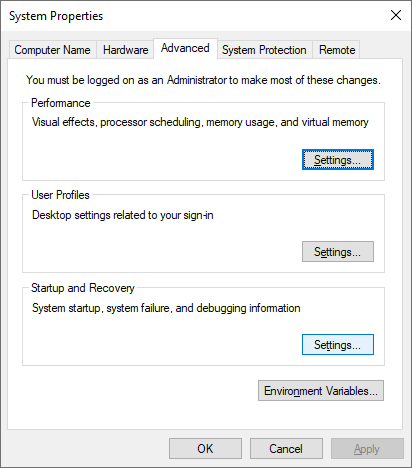
- In the System failure section, make sure to uncheck the Automatically restart option. Click OK to finalize your changes.
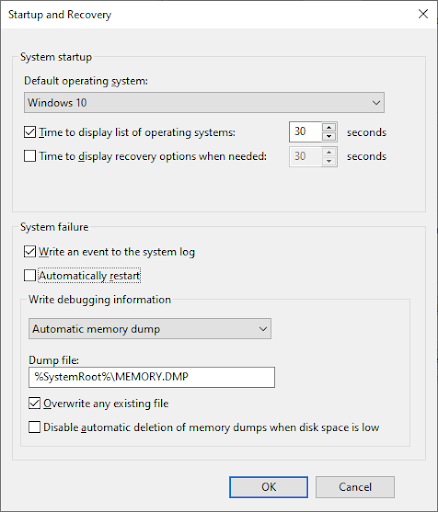
Disabling the automatic restart feature can help safeguard your system from further corruption by preventing automatic reboots in the event of a system failure.
Method 2: Disable the Fast Startup Feature
If you’re using Windows 10, you might be able to fix the random restart issue by disabling the Fast Startup feature. This power-saving mode is enabled by default on most computers, and while it can help save energy, it can also cause problems like your device randomly restarting.
Follow these steps to disable Fast Startup in Windows 10 and Windows 11:
- Click on the Windows icon in your taskbar, and then search for the Control Panel. Launch the application from the search results.
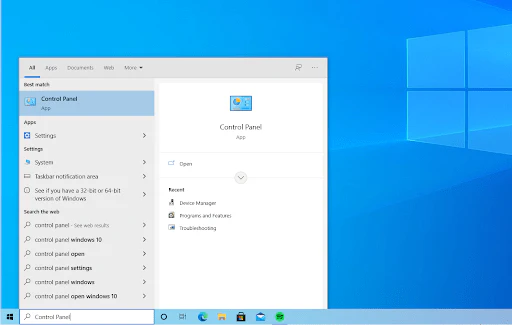
- Click on Power Options. If you can’t see this, switch the view mode to either Large icons or Small icons.
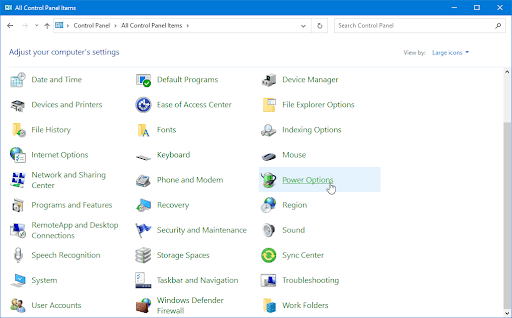
- Click on the Choose what the power button does link in the left-side pane. You’ll be redirected to a new page.
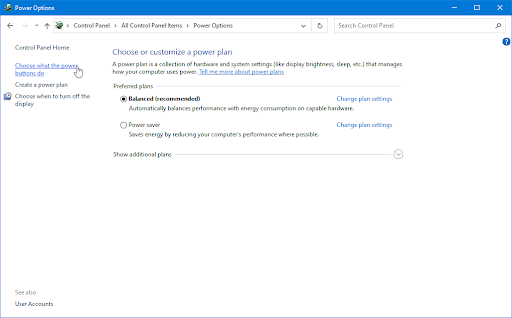
- Before you can make changes, click on the “Change settings that are currently unavailable” link. This will unlock your options.
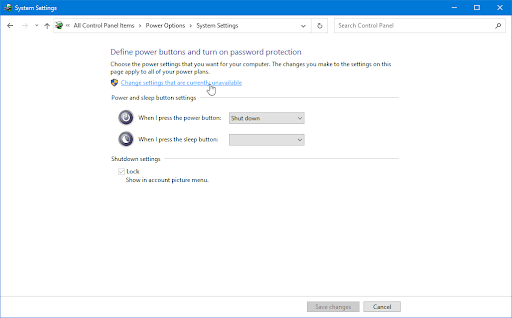
- Make sure to uncheck the Turn on fast startup (recommended) option. Click Save changes to apply the changes before restarting your computer.
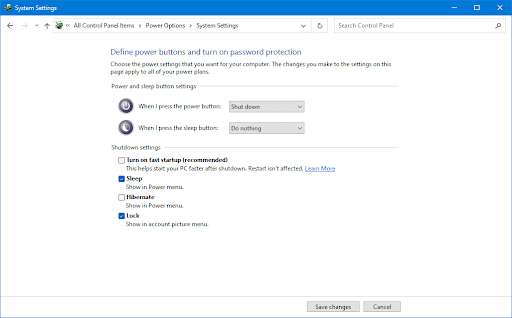
Method 3: Change Your Power Settings
Your power settings may be causing your computer to randomly restart. To resolve this issue, try adjusting your power settings. Here’s how:
- Press Windows + R to bring up the Run utility, then type in “control” and click the OK button. This will open the Control Panel.
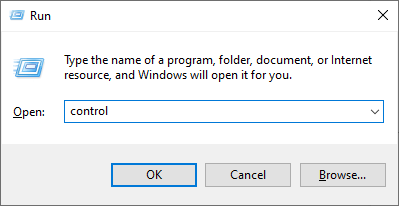
- Make sure that your view mode is set to Category, and then click on the Hardware and Sound heading.
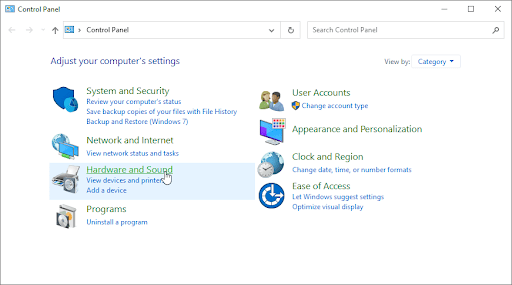
- Click on the Change when the computer sleeps link under the Power Options section.
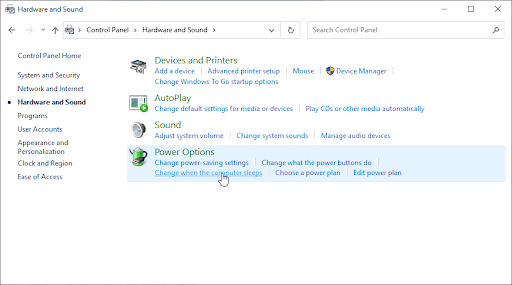
- Click on the Change advanced power settings link. A new window should appear on your screen.
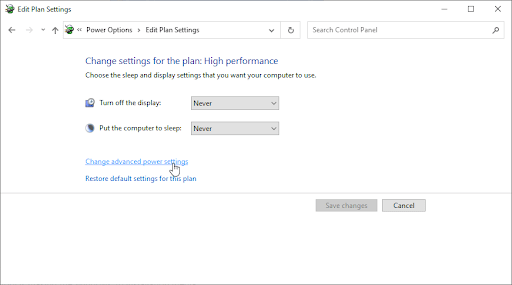
- Scroll down and expand the Processor power management section, then expand Minimum processor state.
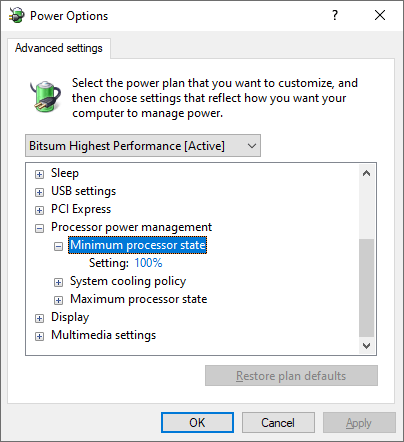
- Click on the current percentage (for example, 100%) and change it to a number lower than 100, such as 80%. When you’re done, click the Apply button, then close the window.
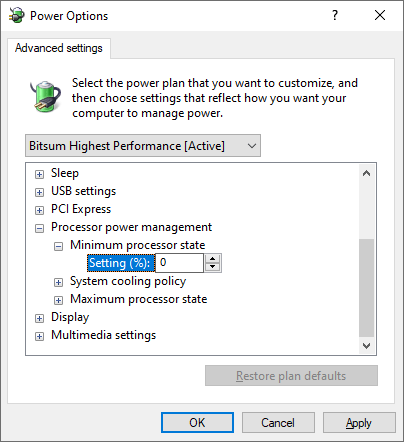
Restart your computer and check if you’re still experiencing automatic or unexpected reboots after making this change.
Method 4: Update Your Drivers
Outdated, missing, or damaged drivers could be causing your computer to randomly restart. Many users have reported that updating drivers for display adapters, chipsets, sound cards, and other devices fixed the issue. Here’s how you can update your drivers:
Option 1: Update Drivers Using Windows Update
- Click on the Windows icon in the bottom left of your screen to bring up the Start menu. Choose Settings, or alternatively use the Windows + I shortcut.
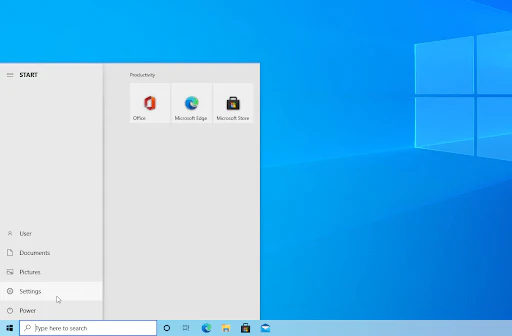
- In the Settings app, click on the Update & Security tile. This is where you can find most of your Windows Update settings.
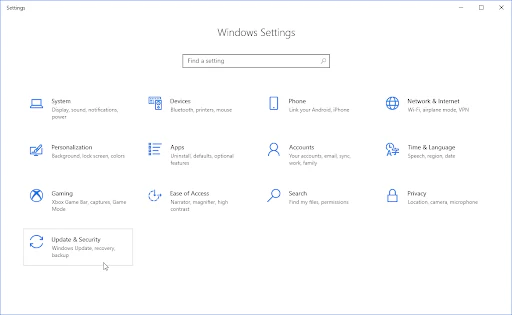
- Go to the Windows Update section, and then click on the View optional updates link if available.
- Expand the Driver updates section, and review which drivers currently need an update. To update the drivers, place a checkmark next to them and click the Download and install button.
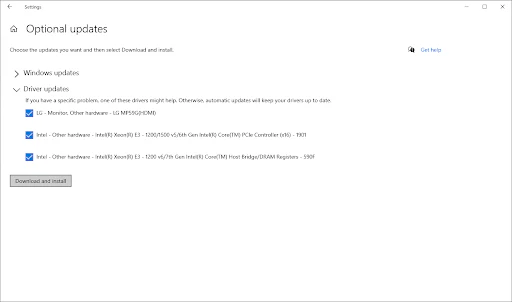
Allow Windows to update your drivers, then reboot your computer.
Option 2: Update Drivers Using the Device Manager
- Press Windows + X keys on your keyboard and click on the Device Manager option from the WinX menu.
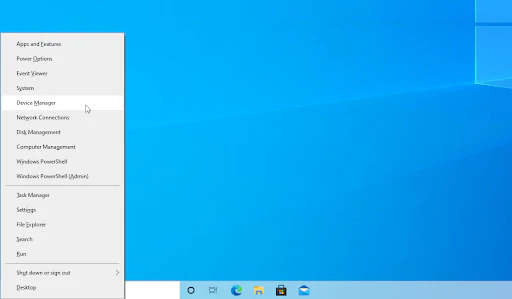
- Right-click on the driver you want to update. If the issue was caused by a graphics card driver, for example, expand the Display adapters section. Select Update Driver from the context menu.
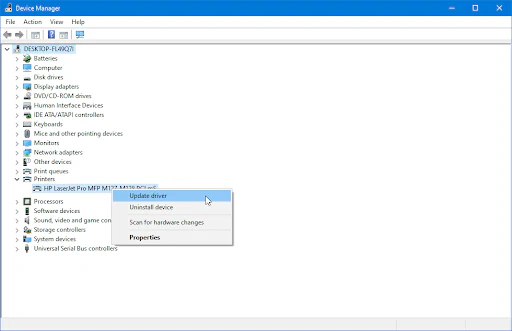
- Choose Search automatically for drivers. This allows Windows to connect to the internet and find the latest drivers for your device. You may be prompted to select a driver if multiple updates are found.
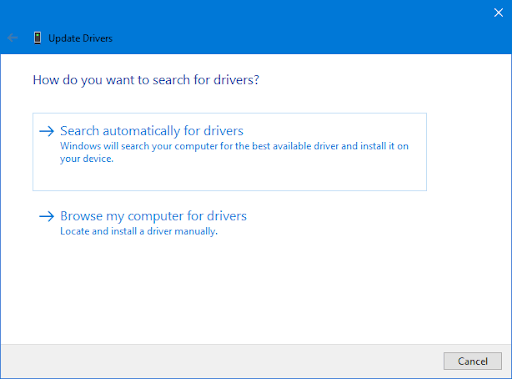
- Wait for the driver installation to complete and restart your computer to apply the changes.
Method 5: Update Group Policies
Is your Windows 10 or Windows 11 still randomly restarting? You may be able to troubleshoot the issue by making a few modifications to your Group Policies. This is especially true if you’ve incorrectly migrated group policies.
Follow these steps to update your Group Policies:
- Right-click on the Start menu icon and select Command Prompt (Admin). When the UAC prompt appears, select Yes to grant admin access. (Click here to learn how to make your account an administrator.)
- Type the gpupdate command and press Enter on your keyboard to execute it.
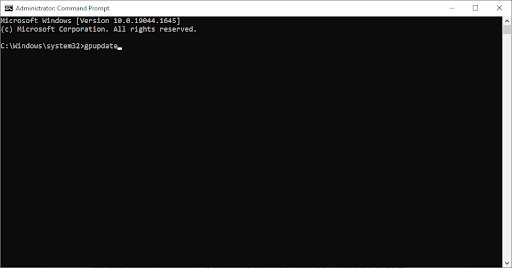
- Wait for the command to finish updating your Group Policy, and then check if you’re still experiencing random or unexpected reboots.
Method 6: Scan Your Computer for Malware
If you’re still experiencing random restarts, it’s possible that your computer is infected with malware. To resolve the issue, you’ll need to scan your system for viruses and remove any malicious programs.
To scan your computer, you can use the built-in Windows Defender application, or consider investing in dedicated antivirus software for a deeper scan.
Here’s how to scan your computer using Windows Defender on both Windows 10 and Windows 11 operating systems:
- Open the search bar in your taskbar by clicking on the magnifying glass icon. Alternatively, you can bring it up with the Windows + S keyboard shortcut.
- Type in Windows Security and launch it from the search results.
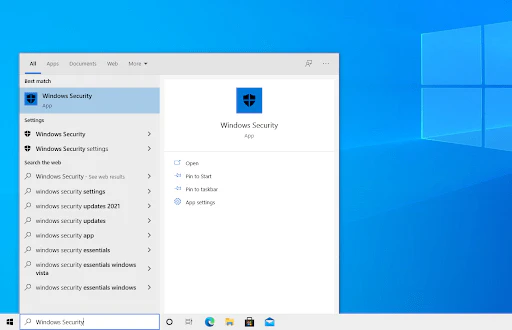
- Switch to the Virus & Threat Protection tab using the home screen or the menu in the left-side pane. Click on the Scan Options link.
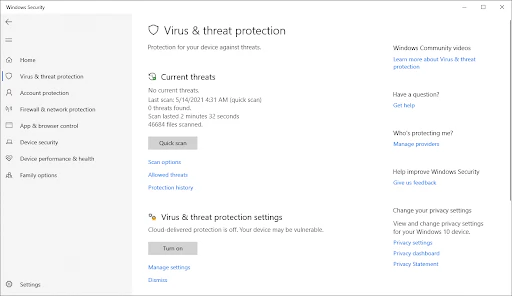
- Select the Full scan option. This will check every single file on all of your drives to ensure no threats are hiding. Note that this scan may take 1-2 hours, depending on how many files you have on your system.
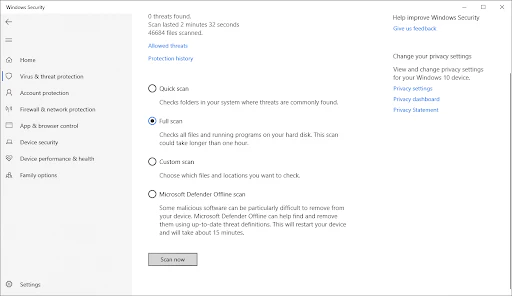
- Click on the Scan now button to begin the scan. If a threat is detected, Windows will automatically quarantine or remove it. You can review the scan results afterward.
Method 7: Run the System File Checker (SFC Scan)
If none of the above methods worked, try running the System File Checker (SFC scan). This is a built-in Windows tool that can fix corrupt system files, which may be causing random restarts.
Here’s how to run the System File Checker:
- Open the search bar in your taskbar by clicking on the magnifying glass icon. Alternatively, press Windows + S on your keyboard as a shortcut.
- Type Command Prompt in the search box. When you see it in the results, right-click on it and choose Run as Administrator. If you’re using a local account that doesn’t have administrator permissions, click here to learn how to grant admin access.
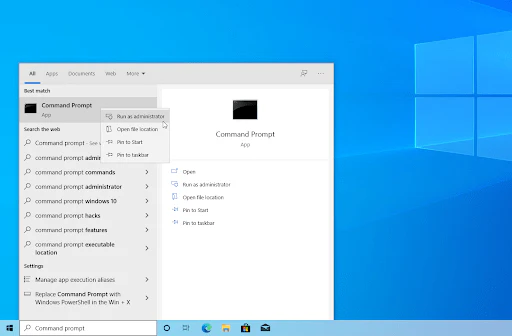
- When prompted by the User Account Control (UAC), click Yes to allow the app to launch with administrative permissions.
- Type in the following command and press Enter to execute it: sfc /scannow.
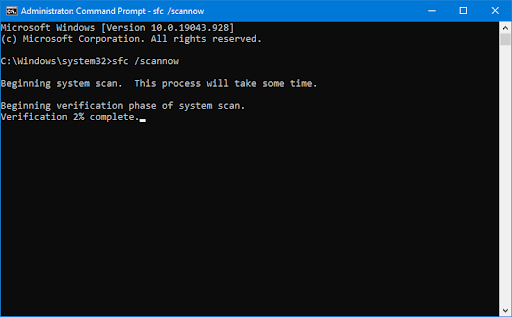
- Wait for the System File Checker to finish scanning your computer. If any discrepancies are found, the utility will restore system files and fix errors related to them.
Method 8: Run the CHKDSK Command
Still no luck? You can try running the CHKDSK command. This is a utility that can fix errors on your hard drive, improve its overall performance and health, and fix various problems that could be causing random restarts.
Here’s how to run the CHKDSK command:
- Open the search bar in your taskbar by clicking on the magnifying glass icon. Alternatively, press Windows + S on your keyboard as a shortcut.
- Type Command Prompt in the search box. When you see it in the results, right-click on it and choose Run as Administrator. If you’re using a local account that doesn’t have administrator permissions, click here to learn how to grant admin access.
- When prompted by the User Account Control (UAC), click Yes to allow the app to launch with administrative permissions.
- Type in the following command and press Enter to execute it: chkdsk C: /r.
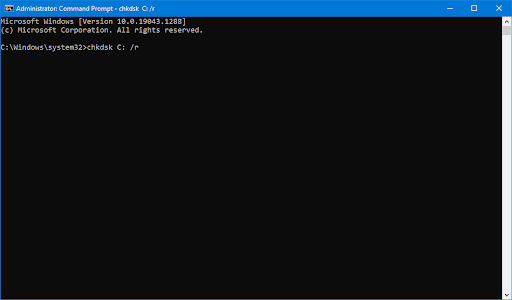
- Wait for the scan to complete.
Method 9: Stop Overclocking
Many users have reported that their computer starts randomly restarting after they overclocked their CPU or GPU.
Overclocking is the process of pushing your hardware beyond its limits to increase performance. If you’re overclocking your computer, try resetting your clock speeds back to their default values and see if that fixes the issue.
While overclocking can be a great way to boost your hardware’s performance, it’s not without its risks. If you’re not careful, you can damage your hardware. That’s why we recommend overclocking only if you’re an experienced user and know what you’re doing. Misconfigured settings can lead to a variety of issues, like causing your computer to automatically restart.
Recover Lost Files After Random Restart
The most frustrating part of your computer randomly restarting is that you may lose unsaved work or open files. But don’t worry, there are ways to recover lost files after a restart. More often than not, these files are impossible to recover, leading to hours of lost work.
Here are a few things you can try to recover lost files after an unexpected restart:
- Check the Recycle Bin: The first place you should look is the Recycle Bin. If you accidentally deleted a file, it may be there.
- Restore previous versions: If you have System Restore enabled, you can try restoring your computer to a previous point in time when the file was not deleted.
- Use data recovery software: Data recovery software can help you recover lost files that were not saved before the restart. We recommend using data recovery software like Disk Drill to scan your computer for lost files. Disk Drill is a powerful data recovery tool that can recover lost files from any storage device, including your hard drive, external hard drive, USB drive, memory card, and more.
We hope this guide has helped you fix your lost files after the random restart issue. If you’re still having trouble or have any questions, feel free to reach out to our experts here at EcomKeys for help!
Summary: How To Fix Random Restart Problems in Windows 11?
To fix random restart problems in Windows 11, start by checking your power supply. If it’s not providing enough power to your computer, that could be the cause of the random restarts. Make sure all the cables are plugged in properly and that the power supply is switched on.
Next, check your drivers. Outdated or corrupted drivers are common culprits behind issues like this. Update all your drivers and see if that fixes the issue.
Finally, inspect your hardware. If you have any damaged or defective hardware, that could be causing the random restarting. Try replacing the hardware with a working one to see if that solves the problem.
If none of these troubleshooting tips help, you may need to contact a computer technician for further assistance!
One more thing
If you’re in search of a software company that embodies integrity and upholds honest business practices, your quest ends here at Ecomkeys.com. As a Microsoft Certified Partner, we prioritize the trust and satisfaction of our customers. Our commitment to delivering reliable software products is unwavering, and our dedication to your experience extends far beyond the point of sale. At Ecomkeys.com, we provide a comprehensive 360-degree support system that accompanies you throughout your software journey. Your trust is our foundation, and we’re here to ensure that every interaction with us is a positive and trustworthy one.

